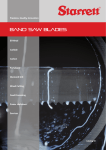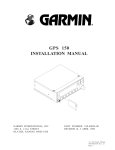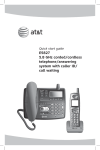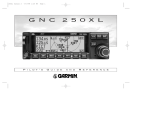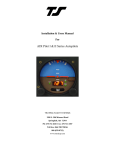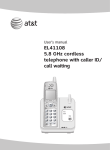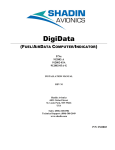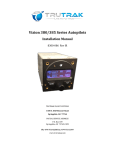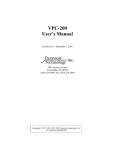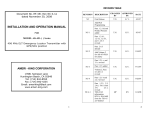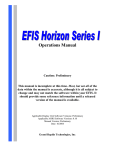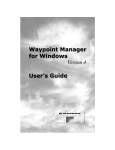Download Garmin RS-232 User's Manual
Transcript
™ Microflo-L Digital Fuel Management System with interface to LORAN-C and GPS receivers with RS-232 output format OPERATING MANUAL Single and Twin Engine Indicators For P/N: 91204XT-38-D Shadin TABLE OF CONTENTS 1. GENERAL DESCRIPTION ..........................................................................3 1.1 THE SYSTEM PROVIDES .........................................................................4 1.1.1 SPECIFIC RANGE............................................................................4 1.1.2 FUEL TO DESTINATION................................................................4 1.1.3 FUEL RESERVE...............................................................................4 1.1.4 ENDURANCE ...................................................................................4 1.1.5 FUEL FLOW .....................................................................................5 1.1.6 FUEL USED ......................................................................................5 1.1.7 FUEL REMAINING..........................................................................5 1.2 SYSTEM COMPONENTS...........................................................................6 1.2.1 FUEL FLOW TRANSDUCER..........................................................6 1.2.2 LORAN-C OR GPS RECEIVER.......................................................6 1.2.3 PANEL MOUNTED UNIT ...............................................................6 1.3 TEST FUNCTION ........................................................................................7 2. PREFLIGHT PROCEDURES.......................................................................8 2.1 INITIAL PROGRAMMING .......................................................................8 2.2 PREFLIGHT CHECK .................................................................................9 2.3 NO FUEL ADDED......................................................................................10 2.4 FUEL TANKS FULL .................................................................................10 2.5 PARTIAL FUEL ADDED..........................................................................11 2.6 CORRECTING FUEL ON BOARD ENTRY ERROR...........................11 3. INFLIGHT OPERATIONS .........................................................................12 3.1 INSTRUMENT OPERATION ..................................................................12 3.1.1 FUEL FLOW ...................................................................................12 3.1.2 FUEL USED ....................................................................................12 3.1.3 FUEL REMAINING........................................................................12 3.1.4 ENDURANCE .................................................................................12 3.1.5 NAUTICAL MILES PER GALLON...............................................13 3.1.6 FUEL TO DESTINATION..............................................................13 3.1.7 FUEL AT DESTINATION..............................................................13 1 3.2.1 3.2.2 3.2.3 3.2.4 NOT ENOUGH FUEL.....................................................................14 RESERVE FUEL WILL BE USED.................................................14 LOW ENDURANCE.......................................................................14 LOW FUEL REMAINING..............................................................14 3.3 BRIGHTNESS CONTROL .......................................................................15 4. EMERGENCY PROCEDURES..................................................................15 5. ERROR MESSAGES ...................................................................................16 6. CONFIGURATION DATA ENTRY...........................................................17 7. SPECIFICATIONS.......................................................................................24 8. WARRANTY INFORMATION ..................................................................26 6831 Oxford Street St. Louis Park, MN 55426 U.S.A. Sales: (800)-328-0584 Technical Support: (800)-388-2849 WWW.SHADIN.COM NOTE: Though references are made in this manual to fuel measured in gallons, the information applies equally to measurements in pounds, kilos, or liters. 2 Microflo-L™ Although not required by the FAA, it is recommended that this manual be attached to the FAA-approved Flight Manual, or always kept on board for reference. 1. GENERAL DESCRIPTION Microflo-L™ is a Digital Fuel Management System designed to provide complete fuel management information under real flight conditions without any manual entry of data (after entry of the initial fuel on board information). Microflo-L™ is connected to the engine fuel flow transducer for fuel flow information and to the Loran-C or GPS receiver serial port for navigation data (ground speed, distance and estimated time en route). This system is also capable of transmitting the fuel information to the Bendix/King KLN-88, KLN-90, and Garmin GPS navigation receivers, except the Garmin 100, for additional calculations and display of fuel management data. Microflo-L™ is set up to measure the flow of fuel in either gallons, liters, pounds, or kilos, and it can be installed on virtually any reciprocating or turbine engine by selecting the proper size fuel flow transducer. 3 1.1 THE SYSTEM PROVIDES 1.1.1 SPECIFIC RANGE Specific Range (NM/GAL) = Ground Speed (Kt.)/Fuel Flow per hour. This is an indication of how efficient the cruise is and the optimum cruise speed can be determined by selecting the power setting, which yields the highest nautical miles per gallon. 1.1.2 FUEL TO DESTINATION Microflo-L™ calculates (under real wind conditions) the fuel necessary to reach the destination as selected on the Loran-C or GPS receiver by multiplying the fuel flow by the estimated time en route to the destination. (If an intermediate waypoint is selected for navigation purposes, the displayed fuel to destination represents the fuel needed to reach the intermediate waypoint unless the distance to the destination is in the serial message.) 1.1.3 FUEL RESERVE Microflo-L™ calculates the amount of fuel which will be available on board when the aircraft reaches the destination or waypoint indicated on the Loran-C or GPS receiver. This feature provides the pilot with accurate information so that the reserve fuel situation can be evaluated and action can be taken if necessary. (If an intermediate waypoint is selected for navigation purposes, the displayed fuel reserve represents the fuel reserve at the intermediate waypoint unless the distance to the destination is in the serial message.) Fuel Reserve = Fuel Remaining – Fuel to Reach Destination. 1.1.4 ENDURANCE Microflo-L™ calculates the time left to fly in hours and minutes based on the fuel remaining and the present fuel flow. 4 1.1.5 FUEL FLOW The system provides a digital readout of the fuel per hour to a tenth of a gallon up to 100 gallons and to the nearest gallon above 100 gallons. For the pounds version, the readout is to the nearest pound up to 999 lbs./hour and to the nearest 10 lbs. above 999 lbs./hour. 1.1.6 FUEL USED The system keeps track of the fuel used since the last fuel entry or reset. 1.1.7 FUEL REMAINING The system keeps track of the fuel remaining on board. Fuel Remaining is equal to Initial Starting Fuel minus Fuel Used. 5 1.2 SYSTEM COMPONENTS The system consists of three (3) basic units: the fuel flow transducer, the navigation receiver (Loran-C or GPS) and the panel mounted unit. 1.2.1 FUEL FLOW TRANSDUCER The fuel flow transducer mounted in the fuel line measures the flow of fuel and generates electrical pulses directly proportional to the fuel flow. The transducer is fail-safe designed, and stopped rotor will not interrupt fuel flow to the engine. 1.2.2 LORAN-C OR GPS RECEIVER The Loran-C or GPS receiver provides ground speed, distance, and estimated time en route through the serial port. 1.2.3 PANEL MOUNTED UNIT All system electronics, function controls and digital displays are contained in a single instrument that mounts in a standard 2¼” hole. This unit requires no periodic maintenance, adjustment, or calibration once it is properly installed. The Display: The fuel flow is always displayed on the left side of the display window. All other functions, with the priority for the rotary switch functions, are displayed on the right side of the display window. System Memory: The system includes a non-volatile memory that retains fuel remaining and fuel used information when the power to the unit is shut down. 6 1.3 TEST FUNCTION Diagnostic software is built into the system. To activate it, press the ENTER/TEST button until all of the display digits fill with a checkerboard pattern, and then release it. This display will flash on and off three (3) times. Next, all digits will be filled with a second checkerboard pattern, the inverse of the first, which will also flash on and off three (3) times. Careful monitoring of these patterns will verify operation of every element of the display unit. If the test is successful, the word “GOOD” will appear in the display window for three seconds. (If the test is not successful, the word “BAD” and an error message identifying the error will be displayed. In such case, the unit will cease to function and must be considered unserviceable until corrective action is taken.) This is followed by: 1) The K-factor setting (Pulses Per Gallon) and units of measure the system is set to (gallons, liters, pounds or kilograms). 2) LT ( ): Loran or GPS Type (without signal, will display ‘LOF’) 3) The distance to waypoint or destination as shown on the LoranC or GPS receiver to check the data interface integrity. (not available without signal) 4) Maximum usable fuel setting. 5) Software version. 6) If the system is not capable of reading the navigation receiver data, the word “LBD” will appear in the display window. NOTE: a) Using the test function while the engine is running will cause the computer to lose 17 seconds of fuel count. 7 2. PREFLIGHT PROCEDURES MICROFLO-L is a fuel flow measuring system and NOT a quantity-sensing device. A visual inspection and positive determination of the usable fuel in the fuel tanks is a necessity. Therefore, it is imperative that the determined available usable fuel be manually entered into the system. 2.1. INITIAL PROGRAMMING The function of initial programming is to enter the total usable fuel into the memory. It can then be recalled whenever the fuel tanks are filled up to the maximum usable fuel. The “Full” fuel setting determines the maximum amount of fuel that can be entered by any method into the Microflo-L. PROCEDURE: 1. Power the unit up. 2. Move the ADD/FULL toggle switch to the FULL position and hold for the entire procedure. 3. Simultaneously press the ENTER/TEST button and move the USED/REM toggle switch to the REM position. The system will then count down for 15 seconds, displaying the count on the left in the display window. 4. The word “FUL” and the current full fuel value will appear in the display window. Release the ENTER/TEST button and USED/REM toggle switch. Keep holding the ADD/FULL toggle switch in the FULL position. 5. Move the USED/REM toggle switch to the REM position to increment the full fuel number or to the USED position to decrement the number. (The longer you hold the switch in position, the faster the number will be updated.) 8 6. After reaching the correct total usable fuel figure, press the ENTER/TEST button and the computer will store that number as full fuel. The word “FUL” disappears and the computer will return to the operating mode. Release the ADD/FULL toggle switch. 7. To verify that the data is stored properly, press the ENTER/TEST button. The computer will run a diagnostic check and then display “GOOD”. If the test is successful, it will display the maximum usable fuel. NOTE: Do not turn the power off to the computer for approximately one minute. This will ensure that the unit has enough time to store the proper figures into the program. 2.2 PREFLIGHT CHECK Initiate the diagnostic software built in to the system by pressing the ENTER/TEST button; the program checks the hardware and the display. If the test is successful the word “GOOD” will appear in the display window; if not, the word “BAD” appears. The system is considered unserviceable until corrective action is taken. At the end of the test routine the system will display the following: 1. Software version 2. The K-factor setting (pulse count/gallon) 3. The display units (Gal., LB 5.8, LB 6.7, etc.) as part of checking the internal settings. Move the USED/REM toggle switch to the USED position. The system will display the fuel used since last fuel entry or fuel used since last reset. 9 Move the USED/REM toggle switch to the REM position. The system will display the fuel remaining on board. The pilot should confirm this figure with the actual fuel on board. 2.3 NO FUEL ADDED This automatically stores information concerning previous fuel levels, even in the case of a power down. If no fuel is added, no action is needed in updating fuel data. 2.4 FUEL TANKS FULL There are two methods to enter full fuel: the ramping method and the ADD/FULL toggle switch method. Ramping Method • • • • Move the USED/REM toggle switch to the REM position and hold. Press the ENTER/TEST button to increment the fuel remaining until the total usable fuel is reached. (The longer you press, the faster the incrementing.) Release the USED/REM toggle switch and the ENTER/TEST button to enter the total usable fuel on board into memory. If the required figure is exceeded, follow the procedure in this manual, section 2.6 Correcting Fuel on Board Entry Error. ADD/FULL Toggle Switch Method • • • • Move the ADD/FULL toggle switch to the FULL position and hold. Press the ENTER/TEST button. Release the ADD/FULL toggle switch so it returns to the center position. To verify, move the USED/REM toggle switch to the REM position. Total usable fuel will be displayed. 10 2.5 PARTIAL FUEL ADDED There are two methods to enter partial fuel: Ramping Method Add the amount of fuel from the refueling meter to the amount of fuel remaining. Enter the total using the following steps: 1. Move USED/REM toggle switch to REM position and hold. 2. Press and hold ENTER/TEST button to increment fuel remaining until figure to be entered is reached; then release button. 3. Release the USED/REM toggle switch. The displayed figure is entered into memory as fuel remaining on board. 4. If the required figure is exceeded, follow the procedure in this manual, section 2.6 Correcting Fuel on Board Entry Error. ADD/FULL Toggle Switch Method 1. Move ADD/FULL toggle switch to ADD position and hold. 2. Move USED/REM toggle switch to REM position to increment fuel added figure until amount of fuel added is reached. 3. Press the ENTER/TEST button. 4. Release the ADD/FULL toggle switch so it returns to the center position. The computer will add the added fuel remaining and use the total as the current fuel remaining. 5. To verify, move the USED/REM toggle switch to the REM position. The current usable fuel remaining will be displayed. 2.6 CORRECTING FUEL ON BOARD ENTRY ERROR In case an error has been made by exceeding the correct amount in entering the total usable fuel, move the USED/REM toggle switch to the USED position and simultaneously press and hold ENTER/TEST button. The fuel remaining figure will appear and pause in the display window for four (4) seconds. The figure will decrement (the longer you press, the faster it decrements). When the correct figure is reached, release both the USED/REM toggle switch and the ENTER/TEST button. To avoid repeating the foursecond pause before decrementing, hold the USED/REM toggle 11 switch in the USED position and use the ENTER/TEST button to control the decrementing. Note: Adding or subtracting fuel by any method resets the fuel used value to zero. 3. INFLIGHT OPERATIONS 3.1 INSTRUMENT OPERATION 3.1.1 FUEL FLOW For Single Engine Aircraft: FUEL FLOW is displayed continuously on the left display window. For Twin Engine Aircraft: Total fuel flow is displayed continuously on the left side of the display window. To read each engine’s fuel flow individually, press the “REM” and “DIM” switches simultaneously. 3.1.2 FUEL USED Fuel used is displayed by moving the USED/REM toggle switch to the USED position. The information is shown on the right display window as long as the switch is held in the USED position and for three seconds after the switch is released. The display represents the fuel used since last reset. 3.1.3 FUEL REMAINING Fuel remaining is displayed by moving the USED/REM toggle switch to the REM position. The information is shown on the right display window as long as the switch is held in the REM position and for three seconds after the switch is released. The display represents the fuel remaining on board at the time of reading. 3.1.4 ENDURANCE Endurance is selected by rotating the rotary switch to the ENDURANCE position. Endurance is displayed in hours and minutes on the right display window. 12 3.1.5 NAUTICAL MILES PER GALLON Nautical miles per gallon is selected by rotating the rotary switch to the NM/GAL position. The information is shown on the right display window. 3.1.6 FUEL TO DESTINATION Fuel to destination is selected by rotating the rotary switch to the FUEL TO DEST. position. The information is shown on the right display window and represents the fuel needed to reach either the active waypoint selected on the Loran-C (or GPS receiver) or the final destination (if the total distance record is provided in the serial message.) This assumes the aircraft ground speed and fuel flow remains constant and the aircraft remains on flight plan course. (Readings obtained during climb and descent are invalid.) 3.1.7 FUEL AT DESTINATION Fuel reserve is selected by rotating the rotary switch to the F. AT DEST position. The information is shown on the right display window and represents the fuel that will be available when the aircraft reaches its destination as indicated on either the selected waypoint or the final destination (if the total distance record is provided in the serial message.) This assumes the aircraft ground speed, altitude, fuel flow, and direction remain constant. (Readings obtained during climb and descent are invalid.) 13 3.2 WARNINGS 3.2.1 NOT ENOUGH FUEL When the rotary switch is in FUEL TO DEST. position, the information in the display window flashes if fuel on board is insufficient to reach either the destination selected as the active waypoint or the final destination (if that total distance record is provided in the serial message). Display window shows amount of fuel short to reach destination preceded by a negative sign. 3.2.2 RESERVE FUEL WILL BE USED With the rotary switch is in F. AT DEST. position, the information in the display window flashes if the aircraft will arrive at the destination with less than the pre-programmed Endurance Warning Time minutes of fuel - calculated at the present cruise power setting. This warning is intended to alert the pilot that the prevailing condition will require the use of some of the selected reserve fuel to reach the destination. 3.2.3 LOW ENDURANCE The Microflo-L can be configured to display a warning based on the time remaining to fly. When the rotary switch is in the ENDURANCE position, and the actual endurance is less than the pre-programmed Endurance Warning Time, the data in the right half of the display flashes. Press the TEST/ENTER button to acknowledge the warning. (Note: Resetting the Microflo-L or adding fuel resets this condition and the warning is enabled again). 3.2.4 LOW FUEL REMAINING The system displays “Lo FUEL” when the fuel remaining reaches the pre-programmed Low Fuel Level configured in setup. Fuel flow information will not be displayed again until the pilot acknowledges this word by pressing the ENTER/TEST button. Fuel calculations are not interrupted by this message. (Note: Resetting the Microflo-L or adding fuel resets this condition and the warning is enabled again). 14 3.3 BRIGHTNESS CONTROL The display brightness is controlled by the BRIGHT/DIM toggle switch. Moving the BRIGHT/DIM toggle switch to BRIGHT repeatedly will make the display brighter; moving it to DIM repeatedly will dim the display. The default brightness after power up is full brightness. 4. EMERGENCY PROCEDURES In case of electrical power failure in-flight, the instrument will cease to function. After restoring power, the system will resume accurate fuel flow reading, but time remaining, fuel used, fuel remaining, fuel reserve, fuel to destination, and all warnings will not be accurate unless the duration of power failure is known, and fuel consumption during the electric power failure is calculated, and subtracted from fuel remaining. 15 5. ERROR MESSAGES ERROR 1: Dues to the necessity of Group 1 settings, if the Flow Meter is set to Operate Mode and the checksum of Group 1 is bad, the display will flash: E1. This refers to Error 1, Group 1. The flow meter will not continue to function after this point, and will continue flashing E1, alerting the flow meter must be serviced. ERROR 2: The Flow Meter will still be accurate and operate under NONLORAN pages if the checksum of Group 2 is bad. In this case, under any Loran page, the Loran information will be replaced by E2. This display refers to Error 2, or Group 2. This is to alert the pilot that the Flow Meter does not have valid Loran and Output selections, and therefore, can not rely on Loran and Output information. NOTE: Remember it is possible to set group settings without having to be in entry mode, therefore, this error can be fixed by going into Manual Entry Mode. 16 6. CONFIGURATION DATA ENTRY Manual Entry Mode Ordinarily, the fuel flow indicator has been set up by the factory to match the K-factor of the supplied transducers and other set-up information. However, there are built-in provisions to change the set-up. Please be sure to define and document initial set-up before attempting to make changes. Overview Previously, all settings depended upon the switches mounted on the processor board. Currently, the Microflo-L™ processor board and software version 60.08.XX has a feature that is referred to as Manual Entry Mode. In this mode, the Flow Meter settings are stored as two groups: Group 1 and Group 2, both shown in the table below. Group 1 Group 2 Left & Right K Factors Output Type (King, AirData, Arnav) Fuel Units Loran Input (On, or Off) Single or Twin Engine Type Endurance Warning Time (45, 30, 20, 10, or 5 minutes) Low Flow Cutoff (On or Filter Type (Injector or Carburetor) Off)* Left & Right Fuel Flow Low Fuel Level Warning (fuel level Offset Frequency* for warning to be issued) Ignore Loran Warning (Yes or No) *These functions are only applicable to DC systems. Manual Entry Mode can be accessed in two ways: one providing access to both Group 1 and Group 2 values, and one providing access to only Group 2 values. The access to Group 2 values can be obtained while the unit is installed in the aircraft. Access to Group 1, however, requires removal of the unit to adjust switch settings. 17 Group 1: Generally, Group 1 is set up by the distributor and contains information defined by the part number. However, although functions are defined here, do not change them without proper knowledge or they will affect performance of the indicator. Group 2: Group 2 must be set up by programming the unit in Manual Entry Mode. Group 2 settings allow the user or installer to change Loran or GPS input and output parameters, endurance warning time, and fuel flow filtering types. 18 Locations of the switches for the Microflo are as follows: F A C E P L A T E Component side of board SW1 SW2 SW3 SW4 Board Edge Each switch has 16 positions, 0-9, A, B, C, D, E, F. Operation Mode vs. Entry Mode FE: If Switch 1 is set to F and Switch 2 is set to E, the unit is in Entry Mode. This is the only mode that will allow the setting of Group 1 values onto the non-volatile memory of the unit. In this mode, both groups can be set. Once installed in the aircraft, this mode is no longer accessible. FF: Once the settings have been programmed, Switches 1 and 2 should be set to FF. This is the Operation Mode, which is required for normal operations. In this mode, settings previously recorded for Groups 1 and 2 will be utilized, and not the switches. Group 2 can still be accessed through the Manual Entry Mode, but Group 1 is not accessible. Switch 1 2 3 4 Entry Mode F E 0 0 19 Operation Mode F F 0 0 Manual Entry Mode There are two ways to access the Manual Entry Page. 1. Set Switches 1 and 2 to Entry Mode and power up. This allows access to both groups. 2. If the Switches are not set to Entry Mode, while running under normal conditions, press the TEST/ENTER button to start the test mode. When the version is displayed, press and hold the TEST/ENTER button for 15 seconds. This allows access to Group 2 only. In both instances, “ENT” will be displayed. When “ENT” appears release button. The display can now be paged through using the fuel “USED” button to scroll forward or the fuel REM button to scroll back. USED REM S *L *R W(u ) VALUES DISPLAYED F *A *B(b) D(d) *U I O *C *E Note: See page 23 for description of parameters. 20 The values displayed can be adjusted with the ADD/FULL toggle switch. ADD increments the value, and FULL decrements the value. As you hold ADD or FULL, the scrolling rate will increase up to a maximum speed. If you wish to jump directly into the fastest scrolling speed, while holding the ADD/FULL toggle switch, press the fuel USED or fuel REM button. Once the desired values are selected, press and hold the TEST/ENTER button while the upper window displays a count down from 5 to 1. When the lower left window displays “SET,” release the TEST/ENTER button. Note: It is recommended that you leave the unit powered up for at least one minute before turning the unit off. Reset switches 1 and 2 to Operate Mode (F,F) and reboot (Power ON). Then confirm the settings. The Manual Entry Pages will be displayed as follows. Symbols in ( ) represent 7 segment characters actually displayed. Field K-factor adjust for Software Versions 60.08.72+ 1. Remove the Microflo-L from the instrument panel. 2. Remove the red label from the right side of the Microflo-L and save it to be put back in place after the adjustment is complete. 3. With a small, flat blade screwdriver change the second hexadecimal switch (SW2) from the face of the Microflo-L from position “F” to position “E”. 4. Reconnect the unit to the aircraft harness and turn the aircraft master switch on. An “L” for the left engine will appear on the left side of the left window, and the K-factor minus the least significant digit on the right side of the window. 21 5. The K-factor values displayed can be adjusted with the ADD/FULL toggle switch located at the lower right corner. ADD increments the value, and FULL decrements the value. 6. Move the REM/USED switch at the upper right corner to the USED position to move to page “r” for the right engine in twin engine aircraft and repeat Step 5. 7. Press and hold the ENTER/TEST button (at the six-O-clock) position for a five seconds countdown that will appear on the display. When the word “SET” appears, release the button and wait 30 seconds before turning the aircraft master switch off. 8. Change the SW2 (hexadecimal switch) back to the “F” position. Put the red label back on the can as it was before the K-factor adjustment. 9. Turn the aircraft master switch on again to test the system for changes made. When the fuel flow settles down to zero, press and hold the ENTER/TEST button until the screen starts to flash and then release the button. The first screen after the “Good” will display the K-factor for the left engine in the left side of the screen with the right side of the screen showing the units of measure (i.e. gallons, pounds, etc). The next screen will be blank on the left side and the right side will display the K-factor for the right engine (if applicable). If the correct K-factor(s) is/are displayed, the procedure was successful. 22 Display Description *L xxxxx = *R xxxxx = *A xxxxx = Left Fuel Flow Offset Frequency (Hz) for Analog Models Only *B(b) xxxxx = Right Fuel Flow Offset Frequency (Hz) for Analog Models Only *U x = *E x = Fuel Units are defined by the part number. Do not adjust these, as improper burn indication will occur. 0 = Gallons 1 = Liters 2 = Lbs 5.8 3 = Lbs 6.7 4 = Kilograms 5 = Lbs 6.5 6 = Lbs 6.35 Engine Type: 0 = Single 1 = Twin *C x = Low Flow Cutoff: 0 = Off 1 = On NOTE: Will not display fuel flow until a rate of 50 pounds per hour is reached. O x = GPS/Output Type: Only used with Microflo-L, which selects the serial data output type by GPS or Loran Manufacturer. 0 = none 1 = Allied Signal, KLN series 2 = AirData, used to communicate with a Shadin Airdata computer 3 = Arnav, used to communicate with most Arnav Loran or GPS 4 = Trimble, used to communicate with most Trimble Loran or GPS 5 = Generic, used to communicate with most Garmin GPS I X = Loran Input: 0 = Off 1 = On D(d) x = Endurance Warning Time: 0 = 45 minutes 1 = 5 minutes 2 = 10 minutes 3 = 20 minutes 4 = 30 minutes F x = Filter Type: 0 = Injector 1 = Carburetor, for engines equipped with a carburetor W(u) x = Ignore Loran Warnings 0 = No (default) setting used with Shadin Flow Meter. With GPS, set to zero (0). 1 = Ignore Loran Warnings. Used with Foster Loran only. S xxxx = * = Group 1 information Left K-factor (where xxxxx is valid from 0 to 20,000. These are in 10s. A setting of 1234 would be a K-factor of 12,340) Right K-factor (as above). Low Fuel Level: Displayed in same units of measure as the flow rate. ( ) = actual letter display. All others displayed as shown 23 7. SPECIFICATIONS Certification: Maximum usable fuel: Maximum Altitude: Operating temperature: Humidity: Accuracy: Ground Speed Range: Functions: TSO-C44a 1,800 gallons 6,822 liters 9,999 lbs 5,484 Kg @ 0.805 Kg/lit 40,000 ft -30° to 50°C Up to 95% @ 32°C ± 2% 27-600 knots Fuel Flow (selectable endurance warning) Fuel Used Fuel Remaining Full Fuel Add Fuel Endurance NM/gallon Fuel to Destination Fuel at Destination ELECTRICAL RATING Input Voltage: Input Current: 14 – 28 VDC 150mA @ 14 VDC to 28 VDC ELECTRICAL INTERFACE RS-232, Serial Data MECHANICAL RATING Weight: Panel unit: 8 oz. Dimensions: 2 ¼” x 4 ¼” Mounting: Instrument Panel 24 COMPATIBLE RECEIVERS: ARNAV R15, R20, R21, R30, R40, R50, R50V, R50i, R5000, FMS5000, Star5000, FMS7000 BENDIX/KING KLN-35, KLN-89B, KLN-90, KLN-90A, KLN-90B, KLN-94, KLX-135, KLN-900 BFGOODRICH/ FOSTER F4, F14, 500, 501, 616, LNS-6000 GARMIN MAGELLAN 100, 150, 150XL, 155, 155XL, 165, 250, 250XL, 300, 300XL GPS 400/500, GNC 420/520, GNS 430/530 5000 NORTHSTAR M1 (above S/N 14800), M1A, M2, M3, 60, 600 SKYFORCE (*AIM) KMD-150, Skymap II, Skymap IIIC *Avionics Installation Module 1000DC, 2000, 3000, 2100, 3100 TRIMBLE IIMorrow/ UPS Aviation Technologies/ Garmin AT Apollo 612B, 618, 618TCA, 820 GX-50/55/60/65, 360, CNX80 NMS 2001, NMC 2001 Microflo-L supports the interface for NMEA 0183 version 2 Input Protocol. This Protocol is available from most Handheld GPS Receivers. No output communication from the Microflo-L to the Handheld GPS Receivers is supported in this configuration. PIN ASSIGNMENTS: PIN 1 2 3 4 5 6 7 8 9 Microflo-L P/N 91204XT-38-D +14VDC or +28VDC (2A Circuit breaker) Airframe Ground Left/Single Fuel Flow Transducer Power (+12VDC to Transducer) Right Fuel Flow Transducer Power (+12VDC to Transducer) Ground to Left/Right Fuel Flow Transducer TX RS-232 (to LORAN or GPS) Left/Single Fuel Flow Transducer Signal Right Fuel Flow Transducer Signal RX RS-232 (from LORAN or GPS) 25 TRANSDUCER 68050X TRANSDUCER 6605XX Red Wire (+12VDC input) Red Wire (+12VDC input) Black Wire PIN A (+12VDC input) PIN A (+12VDC input) PIN C White Wire White Wire PIN B PIN B 8. WARRANTY INFORMATION 6831 Oxford Street St. Louis Park, MN 55426 Limited Warranty Shadin warrants this instrument and system components to be free from defects in materials and workmanship for a period of one year from the user invoice date. Shadin will repair or replace any item under the terms of this Warranty, provided the item is returned to the factory prepaid. This obligation assumed by Shadin under this Warranty is limited to repair, replacement or refund of the product at the sole discretion of Shadin. This Warranty shall not apply to any product that has been repaired or altered by any person other than Shadin or that has been subjected to misuse, accident, incorrect wiring, negligence, improper or unprofessional assembly or improper installation by any person. This Warranty does not cover any reimbursement for any person’s time for installation, removal, assembly or repair. Shadin retains the right to determine the reason or cause for warranty repair or replacement. This Warranty does not extend to any aircraft, vehicle, boat, machine or any other device to which this Shadin product may be installed, connected, attached, interconnected or used in conjunction with in any way. Shadin is not responsible for any shipping charges or damages incurred under this Warranty. 26 No representative is authorized to assume any other liability for Shadin in connection with the sale or resale of Shadin’s products. If you do not agree and accept the terms of this Warranty, you may return the product in new condition, with receipt, within thirty (30) days for a refund. This Warranty is made only to the original user. THIS WARRANTY IS IN LIEU OF ALL OTHER WARRANTIES OR OBLIGATIONS: EXPRESSED OR IMPLIED. SHADIN EXPRESSLY DISCLAIMS ALL IMPLIED WARRANTIES OF MERCHANTABILITY OR FITNESS FOR A PARTICULAR PURPOSE. PURCHASER AGREES THAT IN NO EVENT SHALL SHADIN BE LIABLE FOR SPECIAL, INCIDENTAL OR CONSEQUENTIAL DAMAGES, INCLUDING LOST PROFITS OR LOSS OF USE OR OTHER ECONOMIC LOSS. EXCEPT AS EXPRESSLY PROVIDED HEREIN, SHADIN DISCLAIMS ALL OTHER LIABILITY TO PURCHASER OR ANY OTHER PERSON IN CONNECTION WITH THE USE OF PERFORMANCE OF SHADIN’S PRODUCTS, INCLUDING SPECIFICALLY LIABILITY IN TORT. 27 Digital Fuel Management System Data (Microflo-L) Part Number: __________________________ Serial Number: __________________________ Left/Single Transducer Part or Kit Number: _________________________ Left/Single Transducer Serial Number: _________________________ Right Transducer Part or Kit Number: _________________________ Right Transducer Serial Number: _________________________ Installation Date: _________________________ Installed By: _________________________ Group 2 Configuration Selections O I D(d) F W(u) S Serial Output Type Serial Input On/Off Endurance Warning Time Filter Type Ignore Loran Warnings Low Fuel Level The Continued Airworthiness of the Fuel Flow Indicator is maintained on condition, with no periodic maintenance required. Shadin highly recommends checking out the installation during each annual aircraft inspection in accordance with the post installation check out instructions. The post installation check out procedure can be found in the appropriate system installation manual. NOTES: 28 P/N OP91204-38E 6831 Oxford Street St. Louis Park, MN 55426-4412 U.S.A. Sales Tel: Tech Support Tel: International Tel: Main/Sales Fax: Tech Support Fax: Sales E-Mail: Tech Support E-Mail: Web Site: (800) 328-0584 (800) 388-2849 (952) 927-6500 (952) 924-1111 (952) 924-1122 [email protected] [email protected] www.shadin.com































